Eye AF mode has become a must-have feature for many photographers in recent years. Manufacturers eager to offer the functionality have been steadfast in releasing firmware updates to their flagship cameras, bringing Eye AF to their existing camera range.
They have Sony to thank for this demand. Eye AF isn’t actually such a recent development. Sony first introduced Eye AF functionality all the way back in 2013 – almost the Palaeolithic Era in terms of digital camera technology.
But Eye AF only really became something photographers became excited about when it was made to work in continuous AF (C-AF) mode with the A9. The difference was that when Eye AF is active, it enables the camera to identify an eye in the scene and focus on it. But in C-AF mode it will track your subject’s eye around the frame and keep it sharp.
Before we discuss which Sony cameras have Eye AF, lets briefly explain how to activate it.
How to set up Sony Eye AF?
In brief, you can activate Sony’s Eye AF mode by simply opening the main menu and navigating to the 6th screen of the 1st tab (AF2). Then select Face/Eye AF Set (see image top).
For a more in-depth explanation of the different ways you can set up and use Eye AF, we’ve got a good tutorial here on how to set up Sony’s Eye AF and Animal Eye AF modes. For a deeper dive into the many different camera types and features available, check out our range of camera buying guides.
Which Sony cameras feature Eye AF mode?
Sony A9 II
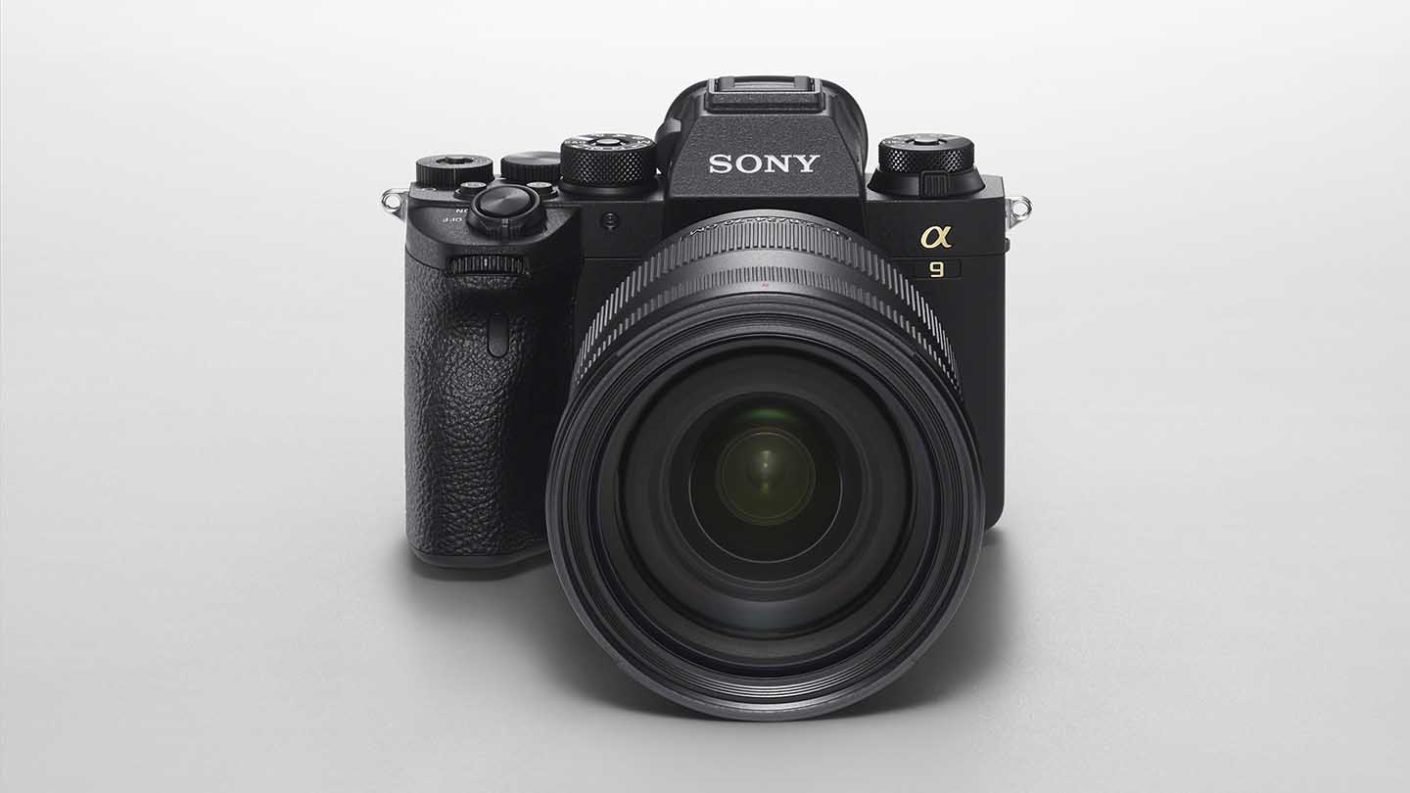
Specification
- Camera type: Full-frame mirrorless
- Sensor: Stacked 24-megapixel full-frame sensor
- Lens mount: FE
- Autofocus: 693-point phase detection AF system, with 425 contrast AF points
- Maximum continuous shooting rate: 20fps
- Maximum video resolution: 4K
- Viewfinder: 0.5-inch electronic viewfinder, 3,6m-dot, 100% coverage
- Screen: 3-inch, 1.4m-dot, tilting, touch-sensitive
- Connectivity: Built-in 1000BASE-T Ethernet terminal
The Sony A9 II retains the same stacked 24-megapixel full-frame sensor as its predecessor, the A9. However, thanks to the addition of Sony’s uprated Bionz X processor, it has faster more precise operation.
The A9 II also retains the A9’s much-lauded 693-point phase detection AF system, which also includes 425 contrast AF points. It also incorporates Sony’s Real Time Eye-AF, Real Time Tracking and Fast Hybrid Focusing modes.
Some of the bigger changes in the A9 II vs the A9 are in its design, which includes new weather-proofing around the A9 II body should appeal to professional users. Sony has also reinforced the areas around ports and battery and memory card doors to prevent ingress of water.
Another new addition to the Sony A9 II is a built-in 1000BASE-T Ethernet terminal, enabling gigabit communication for high-speed data transfer.
The Alpha 9 II also adds a new Voice Memo function that allows users to attach voice memos to specific images that can be replayed when the images are reviewed.
Check the price of the Sony A9 II at B&H Photo Video and Wex Photo Video and get the latest offers at Amazon UK and Amazon US.
£4800
$4500For
- Built for speed
- Outstanding AF
- Enhanced design
Sony A9
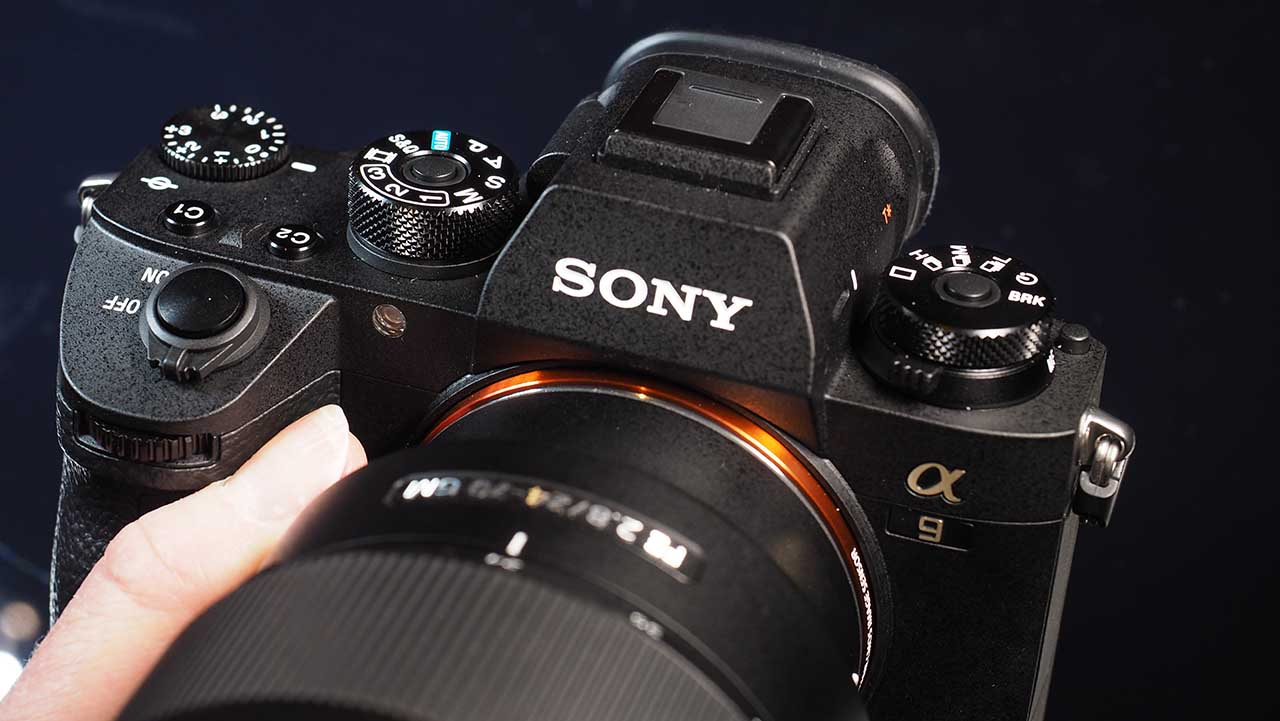
Specification
- Sensor: 24.2-megapixel full-frame sensor
- AF system: 693-point wide area phase detection AF
- Burst Mode in C-AF: 20fps
- Raw Files at 20fps: 241
The Sony A9’s 24.2-megapixel full-frame sensor’s integral memory works in tandem with the Bionz X processor to enable faster data readout. As a consequence the Sony A9 has a full resolution maximum continuous shooting rate of 20fps (frames per second), that’s with continuous autofocus and metering.
That blistering pace can be maintained for up to 241 raw files or 362 jpegs – equating to roughly 12 seconds shooting continuously in raw format or 18 seconds in jpeg format.
So you should able to capture every fleeting expression on a top-class 100m sprinter’s face from the gun firing to the finish line and still have some capacity for the winner’s celebration.
In continuous AF mode the A9 is quick to latch onto moving subjects and it follows them with apparent ease. Angela, our reviews editor, normally shies away from settings that give a camera free rein to determine the AF point to use, but the A9 performed superbly in Wide AF mode even when there was a cluttered background such as cliffs or rocks behind the moving birds.
When she was using continuous AF mode to photograph my dog on the beach, She noticed that if he was still the camera sometimes focused on a point a little closer to her than he was, but as soon as he started moving it snapped onto him. If he ran towards her his head got the AF system’s attention; if he ran away it was his backside.
Find the latest deals on the Sony A9 at Amazon UK and Amazon US.
£3399
$2998For
- Fast, clever AF system
- Superb EVF
Sony A7R IV
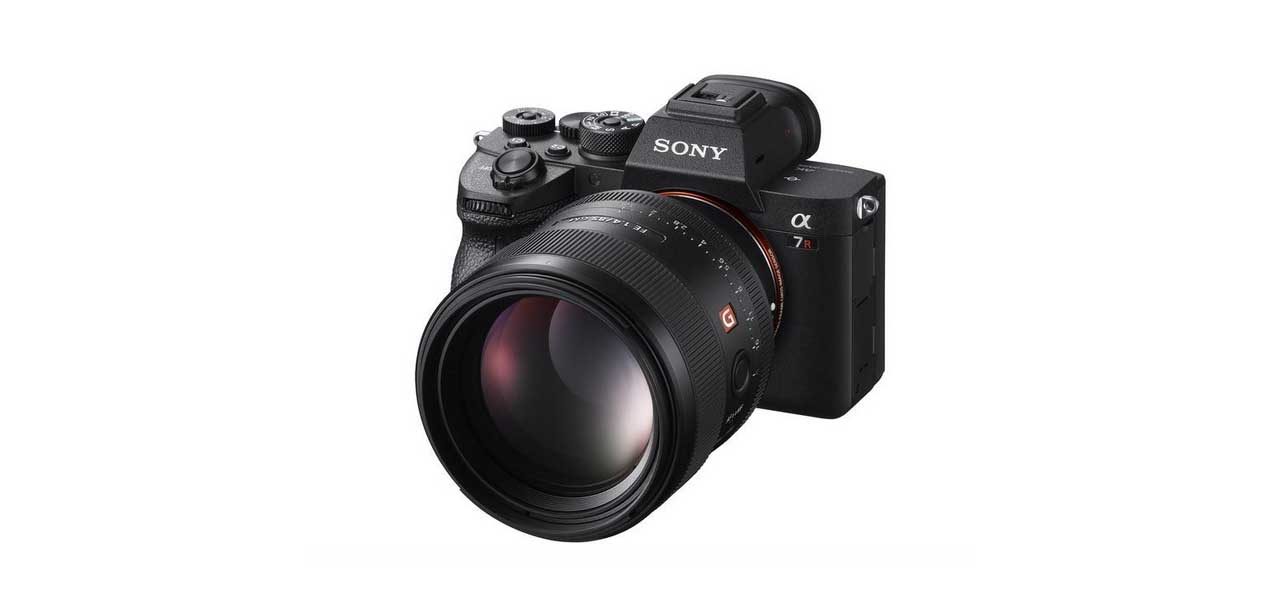
Specification
- Camera type: Full-frame mirrorless
- Announced: 16th July 2019
- Sensor: 61MP BSI full-frame sensor
- Lens mount: Sony FE
- Autofocus system: Hybrid with 567 phase detection + 425 contrast detection AF points
- Continuous Shooting: 10fps burst shooting with full AF / AE Tracking
- Video: 4K video with S-Log2/3, HDR
- Sensitivity range: Still images: ISO 100-32000 (expandable to ISO 50 to ISO 102400) Movies: ISO 100-32000
- Viewfinder: 0.5 type 5,760,000-dot OLED
- Screen: Tilting 3-inch 1,440,000-dot touchscreen
- Storage: 2x SD/SDHC/SDXC UHS-II
- Battery: Rechargeable NP-FZ100 battery supplied, Life Stills: 530 shots (viewfinder) / 670 shots (LCD), Movies: 90mins (viewfinder) / 105mins (LCD)
- Dimensions (WxHxD): 128.9 x 96.4 x 77.5mm
- Weight: 665 g / 1lb 7.5oz with battery and SD card
The Sony A7R Mark IV’s 61-million-pixel 35mm sensor is a world first, which the company says delivers ‘medium format quality’.
The sensor is back-side illuminated, and it provides 15 stops of dynamic range. As well as 61-megapixel images, the Sony A7R Mark IV can also produce images with 26 million pixels in APS-C crop mode.
What’s more, its revampled Pixel Shift Multi-Shooting mode can produce images at 240-megapixel resolution. It does this by capturing 960 megapixels worth of data from 16 images, which it then composites together using Sony’s Imaging Edge software.
The A7R Mark IV boasts 567 phase-detection AF points in full-frame mode, which cover 74% of the frame. In the camera’s APS-C mode it has 325 AF points which then cover nearly the entire frame. There’s also Sony’s excellent AI-driven Real-time Eye AF (for humans and animals ins stills mode) and Real-time Tracking modes, which is invaluable for portrait, wedding, sport, pet and social photography.
Depsite its high resolution, the Sony A7R IV is also built for speed and can capture full-resolution 61-megapixel images in continuous shooting mode at up to 10fps, and up to 68 images per continuous burst.
Also among its key features is 5.5-stop, 5-axis in-body image stabilisation, wireless tethering capability, faster USB connection, 802.11ac Wi-Fi plus Bluetooth and studio lighting support.
It all adds up to make the Sony A7R IV one of the best cameras available right now.
Find the best deals on the Sony A7R IV at Amazon UK and Amazon US.
£3500
$3500For
- Superb detail resolution
- Excellent autofocus system
- High-resolution electronic viewfinder
Sony A7R III
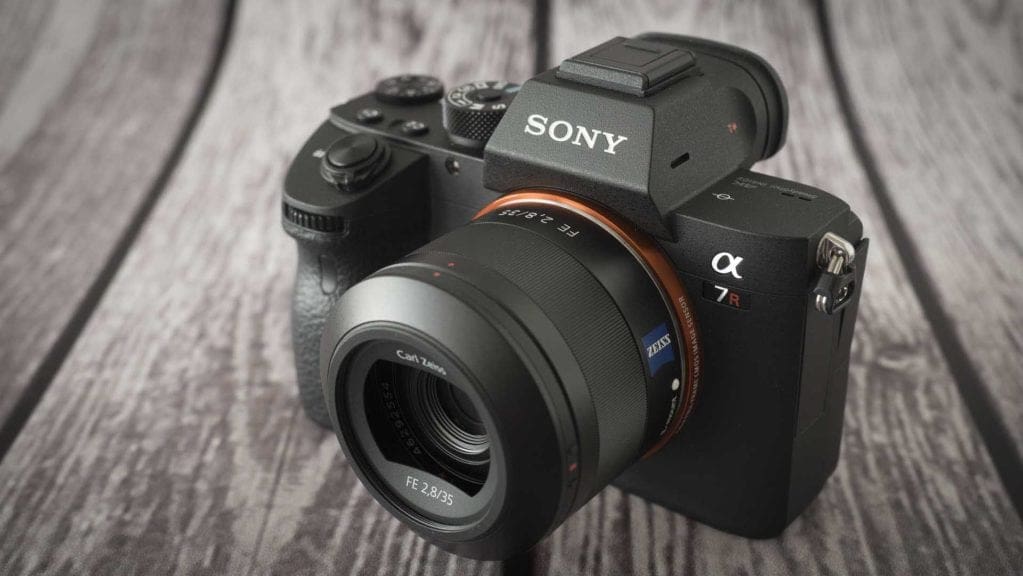
Specification
- Camera Type: Full-frame mirrorless
- Sensor: 42.4MP back-illuminated Exmor R sensor
- Lens mount: Sony FE
- Processing Engine: BIONZ X
- Sensitivity range: ISO 100 – 32000 expandable to ISO 50 – 102400 for still images
- Autofocus system: 824-point Hybrid (399 phase detection points, 425 contrast detection points)
- Viewfinder: 0.5-inch type OLED with 3,686,400 dots
- Screen: Tilting 3-inch 1,440,000-dot TFT LCD touchscreen with White Magic
- Dimensions: 126.9 x 95.6 x 73.7mm
- Weight: 657g / 1lb 7.2 oz with battery and card
The Sony A7R III is aimed at enthusiast and professional photographers. Its high resolution gives it particular appeal to landscape, still-life and commercial photographers.
While it has the same pixel count as its predecessor, the 42.4Mp Sony Alpha A7R III makes some major enhancements on the camera it replaces. As well as improve handling, there’s faster shooting, more decisive focusing and better image quality. Consequently, the Sony A7R III is a phenomenal camera. It’s serious competition for DSLRs like the Nikon D850.
Like the A7R II, the A7R III has a back-illuminated Exmor R sensor with 42.4 million effective pixels. This has a gapless microlens design to boost light sensitivity and dynamic range.
Unlike the Mark II, the A7R III’s sensor has a front-end LSI. This, together with the enhanced BIONZ X processing engine, delivers a 1.8x increase in processing speed and a range of performance enhancements. Notably, Sony claims a low sensitivity (ISO) dynamic range of up to 15-stops.
There’s also Sony’s Pixel Shift Multi Shooting mode that shifts the sensor by 1-pixel distance between shots as four images are captured. These files can then be combined into one image made up from 169.6Mp worth of data using Sony’s new Imaging Edge software. The end result is a 42.4Mp file with greater detail and better tonal gradation.
The difference between standard files and Pixel Shift Multi Shot files is quite subtle, but it is apparent at normal viewing sizes as well as 100% on-screen, it could be especially beneficial for large prints or displays. The Pixel Shift Multi Shot files have a little more detail and better colour gradation, which gives them more impact.
More good news for anyone with low-light shooting tendencies is that the Bionz X processing engine has been enhanced. This enables more complex noise reduction algorithms to be applied so that there’s a claimed 1-stop reduction the level of noise in images.
£2199
$3199For
- High-quality full-frame 42Mp sensor
- 10fps continuous shooting
- Silent shutter possible at 10fps
Sony A7 III
Specification
- Announced: 26th February 2018
- Camera type: Full-frame mirrorless
- Sensor: 24.2Mp Full frame (35.6×23.8mm), Exmor R CMOS sensor
- Processor: Bionz X
- Lens mount: Sony E
- Sensitivity range: Stills: ISO 100-51,200, expandable to 50-204,800, Video: ISO 100-51,200, expandable to 100-102,400
- Maximum continuous shooting rate: 10fps with full AF and metering
- Maximum video resolution: 4K (3840 x 2160)
- Autofocus system: Hybrid with 693 phase detection points and 425 contrast detection points
- Viewfinder: 0.5-inch OLED with 2,359,296 dots
- Screen: 3-inch 921,600-dot tilting touchscreen
- Storage: Dual Slot, Slot 1: SD (UHS-I/II), Slot 2: Multi slot for Memory Stick Duo/SD (UHS-I)
- Dimensions (W x H x D): 126.9 x 95.6 x 73.7mm
- Weight: 650g
The Sony A7 III is the ‘all-rounder’ in the third generation of Sony A7-series of full-frame cameras. It’s aimed at enthusiast photographers but it has features that will also keep many professional photographers happy. It also has a good collection of video specifications (including S-Log3 gamma and clean HDMI output), which means it can be used for professional shoots as well as for fun.
While the A7 III doesn’t have exactly the same autofocus system as the Sony A9, that requires the same sensor, it has the same number of autofocus points: 69 phase-detection points and 425 contrast AF points.
These points cover 93% of the imaging area. This makes it easier than with the A7 II to track moving subjects. In addition, the system is sensitive down to -3EV, which means it should be effective in low light.
There’s also Sony’s Eye AF mode that helps you target the most important part of a portrait subject.
In addition to its excellent autofocus performance, the Sony A7 III is capable of capturing a wide range of tones and images have plenty of detail while noise is controlled well throughout the native sensitivity (ISO) range.
Find the latest deals on the Sony A7 III at Amazon UK and Amazon US.
£1699
$1999For
- Good-quality 24Mp full-frame sensor
- Excellent autofocus system
- Attractively priced in the full-frame market
Sony A7S II
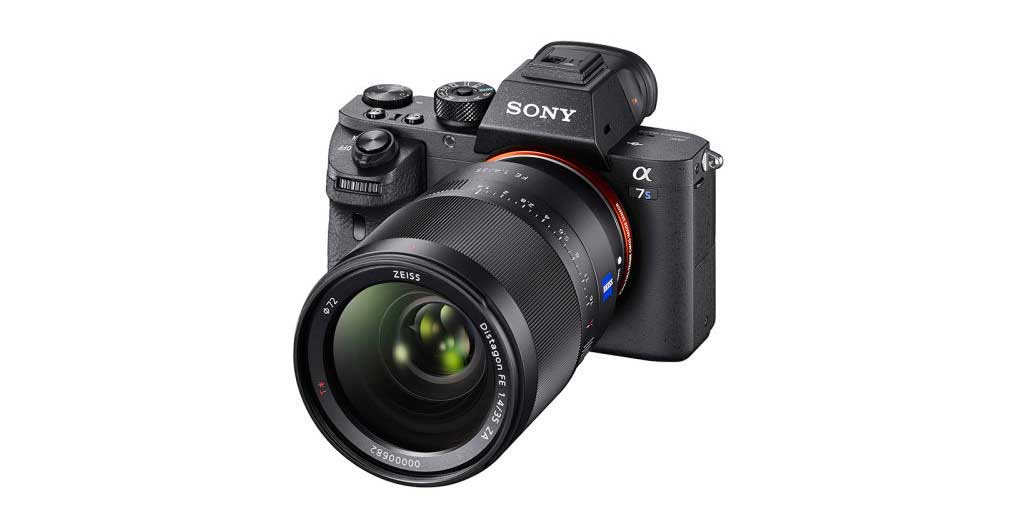
Specification
- Sensor: 12MP full-frame
- Stabilisation: 5-axis
- Colour Modes: S-Gamut3.Cine/S-Log3
- Video: 4K at 30fps and 1080p at 120fps.
Though it’s now a few years old, the Sony A7S II is still one of the best cameras for filmmakers. Its low-resolution 12-megapixel sensor may seem like a throwback to the early days of digital photography, but it’s been fine-tuned for video recording to ensure maximum image quality.
Essentially the 12MP sensor enables full pixel readout without pixel binning so making maximum use of the sensor.
With features and layout more akin to a stills camera than video it makes the transition for today’s generation of photographers to easily transition between stills and video.
It also packs in pro log colour modes such as S-Gamut3.Cine/S-Log3 which makes it easy for video editors and directors to seamlessly blend footage from multiple cameras.
Of course, ensuring that you’re able to capture the best possible quality video it has options to shoot at 4K, 30fps and 1080p, 120fps.
Being small and lightweight makes the A7S II ideal for handheld use and here the camera features 5-axis images stabilisation to ensure smooth, fluid handheld footage.
The Sony A7S II remains one of the best Sony cameras you can buy, even if rumours of its demise won’t go away.
£1999
For
- Internal 4K recording
- Excellent in low light
- Professional-quality video
Sony A6600
Specification
- Camera type: Mirrorless
- Announced: 28th August 2019
- Lens mount: Sony E
- Sensor: 24.2MP APS-C Exmor CMOS (23.5 x 15.6mm) sensor
- Video: 4K (3840 x 2160) 25/30p video capture with log profiles
- Continuous shooting rate: Hi+: 11fps, Hi: 8fps, Mid: 6fps, Lo: 3fps
- Burst depth: In Hi+ 46 raw files, 99 Extra Fine Jpegs or 44 raw and Jpeg files
- Stabilisation: 5-axis in-body image stabilisation
- Sensitivity: ISO 100-32000 (expandable to ISO 50 – 102400)
- Autofocus : Fast Hybrid AF (phase-detection and contrast-detection each with 425 points), Face Detection and Real-Time Eye AF
- Viewfinder: 0.39-inch 2,359,296-dot OLED electronic viewfinder
- Screen: 3-inch 921,600-dot tilting touchscreen
- Storage: SD/SDHC/SDXC UHS-I or Memory Stick PRO Duo, Memory Stick PRO-HG Duo, Memory Stick Micro (M2)
- Dimensions (W x H x D): 120.0 x 66.9 x 69.3mm / 4 3/4 x 2 3/4 x 2 3/4-inches
- Weight: 503g / 1lb 1.8oz with battery and memory card
The Sony A6600 is Sony’s flagship APS-C format mirrorless camera and it’s aimed at enthusiast photographers and videographers who want to shoot in a variety of conditions. It features a 24.2MP Exmor CMOS image sensor, the BIONZ X image processor and a front-end LSI as is implemented in Sony’s full-frame cameras for better enhancements in still and video image quality.
Among the A6600’s impressive feature set is Sony’s innovative 5-axis in-body image stabilisation system that provides a 5.0-step shutter speed advantage.
The Alpha 6600 also delivers an autofocus acquisition time of just 0.02 seconds, with 425 phase-detection AF points covering approximately 84% of the image area and 425 contrast-detection AF points.
Also on-board is Sony’s ‘Real-time Tracking’ and ‘Real-time Eye AF’, the latest version of Sony’s Eye AF technology, which employs AI-based object recognition to detect and process eye data in real-time.
Real-time Eye AF promises improved accuracy, speed and tracking performance of Eye AF for both humans and animals, and allows the photographer to concentrate exclusively on composition. It’s a significant bonus for pet and portrait photography.
High-resolution internal 4K movie recording with full-pixel readout without pixel binning in Super 35mm format is also on-board. You’ll also find built-in interval shooting for time-lapse videos and a 180-degree tiltable, 3.0-type 921k-dot (approx.) LCD touch screen.
It may not have the same shape as the Sony A7 series of full-frame cameras, but the A 6600 has much of the same technology, enabling it to deliver impressive results with a wide range of subjects.
£1450
€1600For
- Very good image and video quality
- Fast, accurate AF system
- Excellent battery life (800+ shots)
Sony A6400
Specification
- Phase detection points: 425
- Contrast AF points: 425
One of the most exciting developments is with the autofocusing. It draws on the technology in the Sony A9, A7R III and A7 III. There’s a total of 850 AF points, 425 that use phase detection and 425 that use contrast detection. These are said to be packed together tightly and cover 84% of the image area.
That dense coverage helps make the A6400 good at identifying and tracking subjects.
Sony also claims that the new-generation BIONZ X image processing engine enables the camera to achieve focus in just 0.02sec.
In addition, there’s ‘Real-time Eye AF’, the latest version of Sony’s excellent Eye AF system. This automatically locates the eyes in real time to get them sharp. You can even set a preference for focusing on the left or right eye. There’s also Real-time Tracking that uses artificial intelligence (AI) to help recognise subjects. Together, these should result in fast and accurate focusing in a wide range of situations to allow the photographer to concentrate on getting the composition right.
Sony has also added Animal Eye AF support via a firmware upgrade, which is great news for keen wildlife photographers and pet owners.
Sony A6100
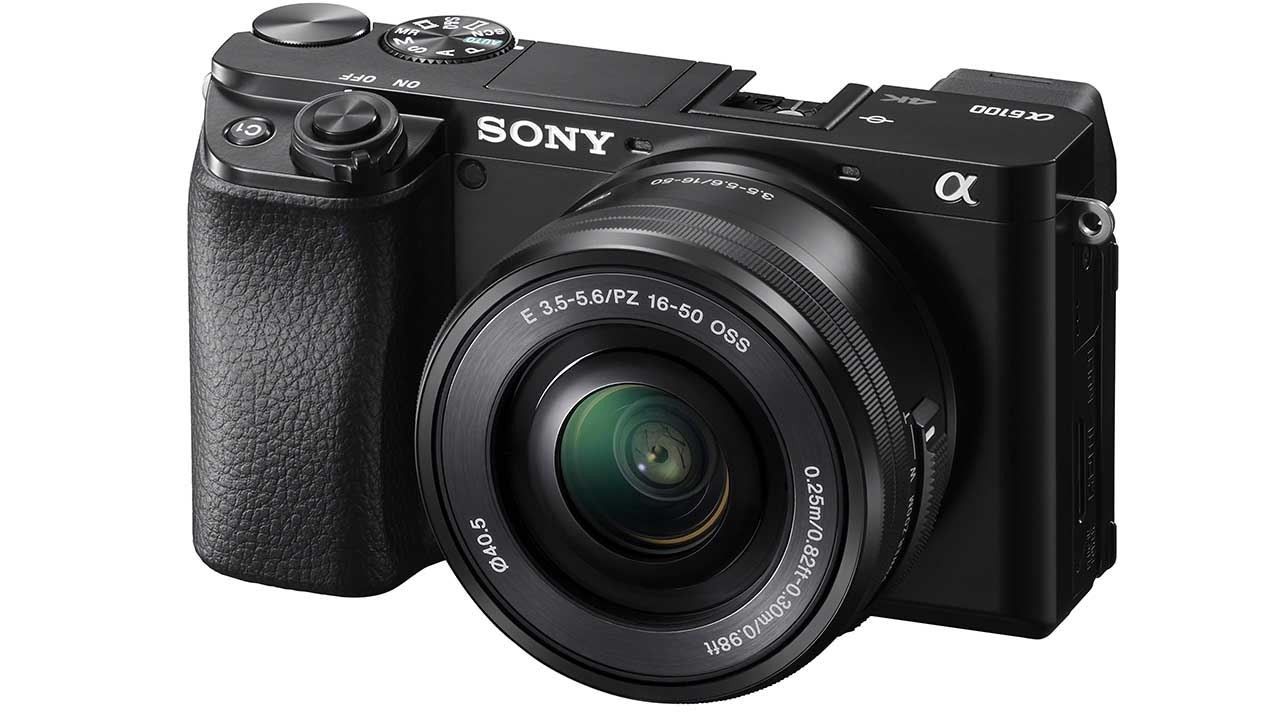
Specification
- Sensor: 24.2MP Exmor CMOS image sensor
- Video: 4K movie recording with full-pixel readout
- Screen: 180-degree tiltable, 3.0-type 921k-dot LCD touch screen
- Autofocus: 425 phase-detection and 425 contrast-detection AF points
Aimed at beginner photographers, the Sony A6100 offers plenty of room to grow. Its impressive feature set nearly matches the fellow APS-C format Sony A6600.
Like its sibling, it boasts internal 4K movie recording in Super 35mm format with full pixel readout without pixel binning, to capture approximately 2.4x the amount of information required for 4K movies. Budding videographers will also appreciate the integrated microphone input and built-in interval shooting.
Again, like the A6600, the A6100 incorporates a 24.2MP Exmor CMOS image sensor, the latest BIONZ X image processor and a front-end LSI. AF acquisition is lightning fast at 0.02secs via its 425 phase-detection AF points covering approximately 84% of the image area and 425 contrast-detection AF points.
Sony’s Real-time Tracking and Real-time Eye AF modes are also on-board, delivering faster and more accurate AF performance when photographing humans and animals.
£830
€900For
- Real-time Tracking and Eye AF
- 4K video
- Very fast AF
Sony RX100 VII
Specification
- Camera type: Compact
- Sensor: 20.1Mp 1-inch type (13.2mm x 8.8mm) Exmor RS CMOS
- Lens: ZEISS Vario-Sonnar T* 9-72mmm (24-200mm equivalent) f/2.8-4.5
- Autofocus: 357 focal-plane phase-detection and 425 contrast-detection AF points
- Burst Mode: 90fps in JPEG or Raw format in Single Burst Shooting mode
- Video: 4K in-body movie recording with full pixel readout
- Viewfinder: 0.39-inch 2,359,296-dot OLED (pop-up)
- Screen: Tilting 3-inch 921,600-dot TFT touchscreen (up 180-degrees, down 90-degrees)
- Storage: SD/SDHC/SDXC
- Dimensions (WxHxD): 101.6 x 58.1 x 42.8 mm / 4 x 2 3/8 x 1 11/16-inch
- Weight: 302g / 10.7oz with battery and SD card or 275g / 9.8oz body only
Promising ‘A9-level’ AF performance as well as 90fps single burst shooting, the RX100 VII turned a lot of heads when it was announced and reinforced Sony’s reputation as a true innovator in the market.
Inside the RX100 VII is a 1-inch, stacked 20.1-megapixel Exmor RS CMOS sensor with a DRAM chip and Sony’s Bionz X image processor. On the outside is a ZEISS Vario-Sonnar T* 24-200mmviii F2.8-4.5.
What should really get people excited, though, is the technology the RX100 VII inherits from Sony’s A9. Like the A9, the RX100 VII’s image sensor realises blackout-free shooting for a completely live view, even when continuous shooting at 20fps.
The RX100 VII also promises ‘A9-level’ AF/AE tracking performance during continuous shooting, meaning the camera performs AF/AE calculations up to 60 times per second and captures fast-moving action at 20fps with AF/AE tracking.
Sony’s Real-time Eye AF and Real-time Tracking modes also make their debut for the first time in a compact camera. With 357 focal-plane phase-detection AF points and 425 contrast-detection AF points, its AF system is among the best you will find in a camera this small.
The Sony RX100 VII also debuted a new Single Burst Shooting mode, which captures a high-speed shot at up to 90fps in JPEG or Raw format using the anti-distortion shutter. Sony describes the mode as enabling photographers to frame fast-moving action and shoot as if capturing a single frame, but the RX100 VII will deliver seven frames, taken at 90fps, 60fps or 30fps.
Aimed at vloggers, the Sony RX100 VII also brings some solid movie-making credentials, such as 4K in-body movie recording with full pixel readout and no pixel binning in high bit rate XAVCS, Real-time Tracking and Real-time Eye AF for video and a microphone input.
£1200
$1198 / €1300For
- Best-in-its-class AF system
- Stabilised 4K video
- Great focal length range
Sony A6500
Specification
- Sensor: 24.2MP APS-C (23.5 x 15.6mm)
- Sensitivity: ISO 100-25,600 expandable to 51,200
- Continuous Shooting: 11fps with C-AF for up to 233 Extra fine Quality JPEGs or 107 raw files
- Autofocus: 594-point Hybrid (425 phase detection points, 169 contrast detection points)
Inside the Sony A6500 is an APS-C format CMOS sensor with 24.2 million effective pixels. This is coupled with a front-end LSI and a BIONZ X processing engine that enable a maximum continuous shooting rate of 11fps with continuous autofocusing.
In addition there’s a fast autofocusing system that is able to keep up with moving subjects so it’s possible to shoot sport and action.
The A6500 has a built-in electronic viewfinder which is capable of displaying a lot of detail. There’s also a tilting touch-screen that gives a clear view and can be used for setting AF point or zoom in to check image sharpness.
Generally, the A6500 produces high quality images that have plenty of detail and noise that’s controlled well up to around ISO 25,600. Video quality is also high and can be recorded at up to 4K (3840x2160p) resolution in Super 35mm format.
£1499
$1398For
- Great image quality
- Noise well-controlled
- Great image quality with lots of detail
- Fast AF
Sony Xperia 5
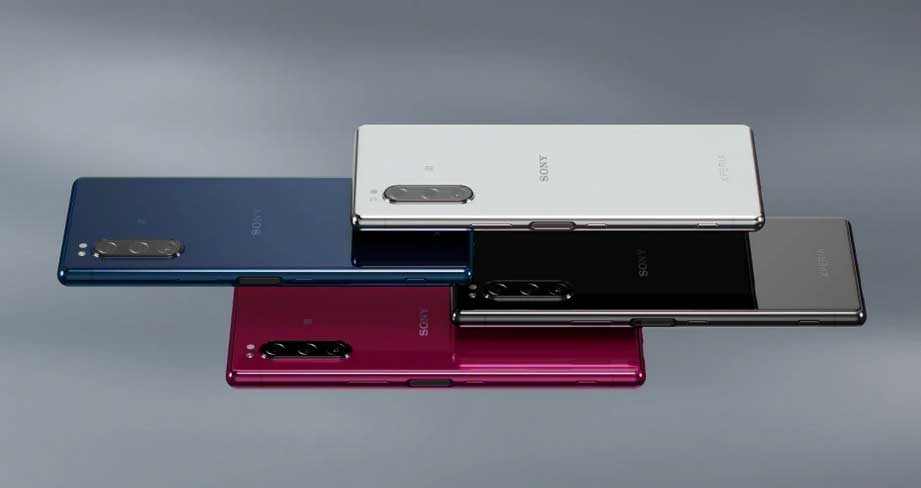
Specification
- Lenses: 16mm f/2.4, 26mm f/1.6 and 52mm f/2.4
- Video : 10-bit 4K HDR video
- Sensors: Three cameras each offering 12-megapixel resolution
The Sony Xperia 5’s three cameras each offer 12-megapixel sensors and are backed by 16mm f/2.4, 26mm f/1.6 and 52mm f/2.4 lenses (35mm equivalent).
The Xperia 5’s cameras can shoot in continuous bursts at up to 10fps with AF/AE tracking at calculations of up to 30fps.
The Xperia 5 also inherits Sony’s Eye AF technology, which can detect human eyes and keep them in focus. Users can also shoot 10-bit 4K HDR video.
Inside the device is Sony’s latest Bionz X processing engine for mobile and the Snapdragon 855 chipset. Other features include USB PD fast charging, a 3140mAh battery and ‘Smart connectivity’ to make sure you’re connected to the most optimal network.
On the outside, the Xperia 5 offers a 21:9 CinemaWide, 6.1-inch Full HD+ OLED display.
£700
$799 / €799For
- Eye AF is fantastic
- Excellent video quality
- Superb display

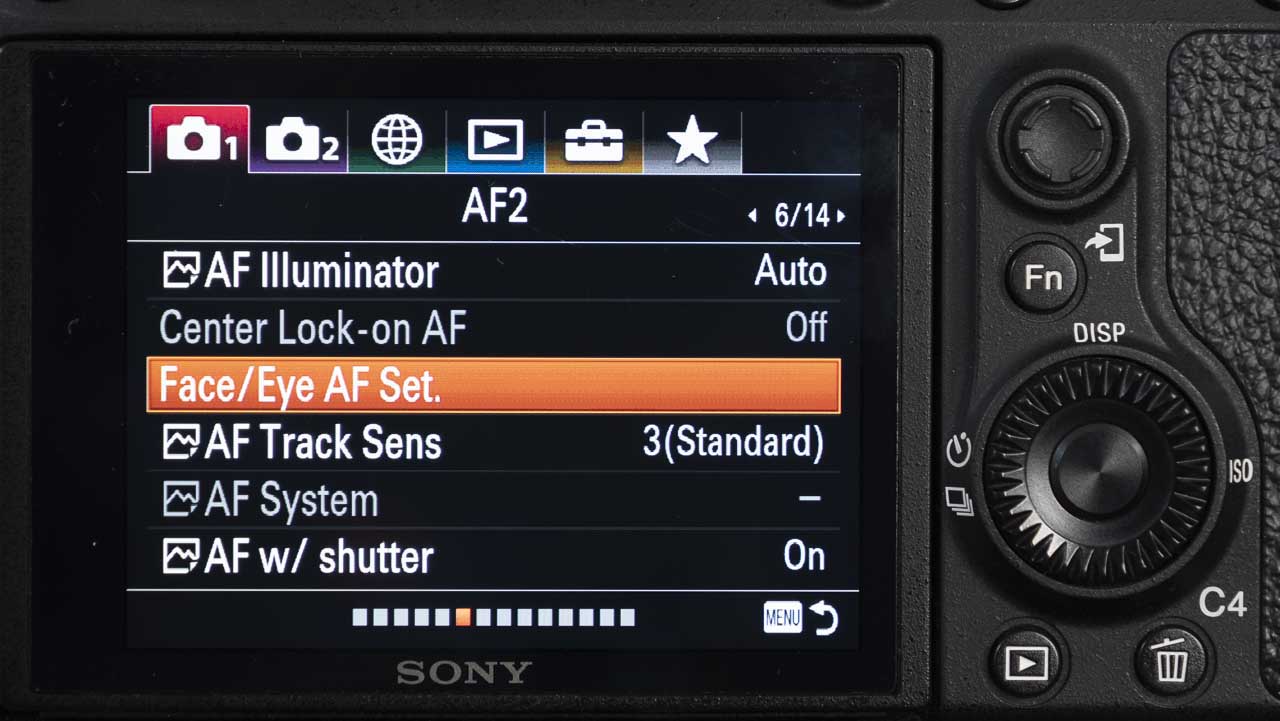



Leave a Reply
You must be logged in to post a comment.